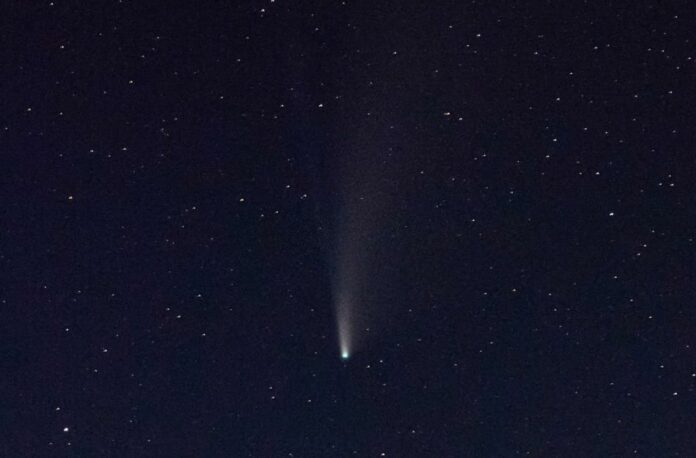How did life’s essential elements arrive on Earth? This significant question, posed by the scientific community, has various proposed answers. The most widely accepted theory is that these vital components came from space, particularly via comets.
Recently, researchers from the University of Cambridge have proposed a method through which comets might distribute these fundamental ‘building blocks’ across numerous planets in the galaxy.
The mystery of how Earth’s foundational life molecules originated has been a subject of long-standing debate, with one theory suggesting cometary delivery. Researchers at the University of Cambridge have now explored this possibility, extending it to other planets in the galaxy.
For comets to deposit organic material effectively, they must travel at relatively low speeds, under 15 kilometers per second. Beyond this velocity, vital molecules disintegrate due to the impact’s speed and heat.
“Peas in a pod” systems, featuring closely orbiting groups of planets, present the ideal conditions for comet travel at these optimal speeds. In such systems, a comet can be transferred from one planet’s orbit to another, reducing its speed sufficiently.
At these reduced velocities, a comet can impact a planet, depositing molecules intact, which are believed to be life’s precursors. A study published in the Proceedings of the Royal Society A suggests these systems are prime targets in the search for extraterrestrial life, assuming cometary delivery plays a crucial role in life’s origins.
Comets are rich in prebiotic molecules, including amino acids and vitamin B3, as evidenced by 2022 analyses of the Ryugu asteroid. Hydrogen cyanide (HCN), another vital prebiotic molecule found in comets, is particularly resilient to high temperatures due to its strong carbon-nitrogen bonds, enhancing its chances of surviving atmospheric entry.
Richard Anslow from Cambridge’s Institute of Astronomy explains that while studying exoplanet atmospheres, they investigated whether complex molecules could be comet-delivered elsewhere in the galaxy. Considering the theory that life on Earth might have originated from comet-borne molecules, the same process could occur on other planets.
“It’s possible that the molecules that led to life on Earth came from comets, so the same could be true for planets elsewhere in the galaxy.”
The research doesn’t assert that comets were essential for life’s origins on Earth or elsewhere. Instead, it sets boundaries on the planet types where comets could successfully deliver complex molecules like HCN.
Most Solar System comets originate from the Kuiper Belt, beyond Neptune. Gravitational interactions with Neptune and Jupiter can send these comets towards the Sun, sometimes passing the inner Solar System.
Anslow’s team aimed to apply their theories to Earth-like planets, given that Earth is our only life-supporting example. They questioned the types of comets and speeds necessary for delivering intact prebiotic molecules.
“We wanted to test our theories on planets that are similar to our own, as Earth is currently our only example of a planet that supports life,” added Anslow. “What kinds of comets, travelling at what kinds of speed, could deliver intact prebiotic molecules?”
Using mathematical models, the team concluded that comet delivery of life’s precursor molecules is feasible but context-dependent. For planets around Sun-like stars, a low mass and proximity to other planets in the system are advantageous. For planets around lower-mass stars, nearby planets in close orbits become crucial due to typically higher speeds.
In optimal systems, a comet can be gravitationally drawn by one planet and then passed to another, slowing it down enough for some prebiotic molecules to survive atmospheric entry.
“In these tightly-packed systems, each planet has a chance to interact with and trap a comet,” explained Anslow. “It’s possible that this mechanism could be how prebiotic molecules end up on planets.”
However, planets orbiting lower-mass stars, like M-dwarfs, face more challenges in molecule delivery, particularly if their planetary systems are not closely packed. These planets also endure more high-velocity impacts, posing additional challenges for life.
This research provides a new lens for identifying extraterrestrial life. Anslow highlights the excitement of combining advances in astronomy and chemistry to explore fundamental questions about life’s origins and the potential for similar processes on other planets.
Image Credit: LOIC VENANCE/AFP via Getty Images
